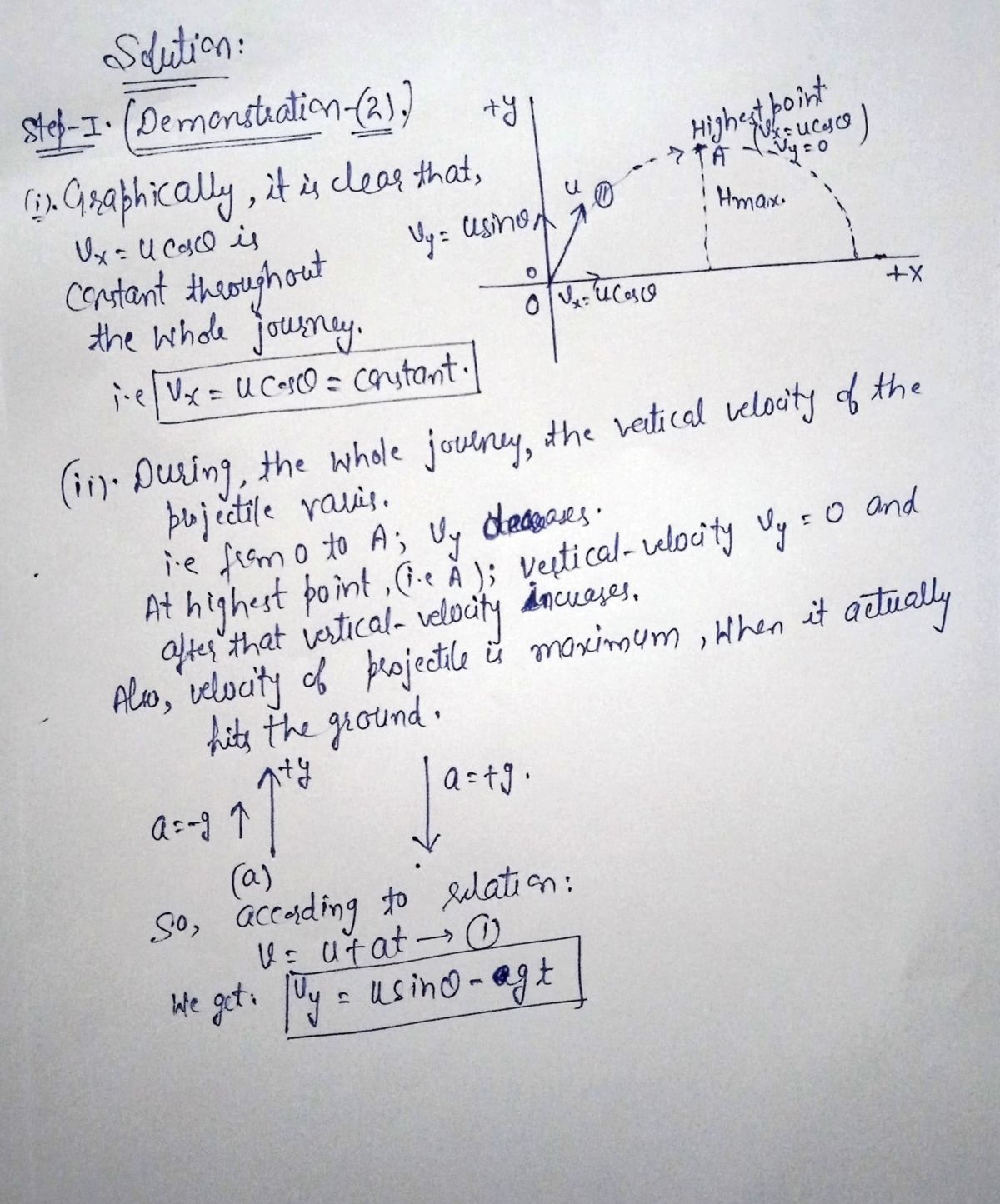Demonstration 2: On the axes to the right, sketch your predictions for the x-component of the velocity as a function of time and the y-component of the velocity as a function of time. Based on your graph for v, vs. t, write an equation for vx as a function of time. Vx = Based on your graph for v, vs. t, write an equation for vy as a function of time. Vy (a) (b) x component of velocity O y component of velocity + O y Question 5: In the space below, draw an arrow that represents the direction of the acceleration of the ball (a) just after it is released, (b) when it reaches the highest point in its trajectory, (c) while it is on its way down. If the acceleration is zero, write ZERO above the ball. (c) time O time Question 6: In the space below, draw the free-body (force) diagram for the ball (a) just after it is released, (b) when it reaches the highest point in its trajectory, (c) while it is on its way down. If there are no forces acting on the ball, write NONE above the ball. If the net force on the ball is zero, write ZERO above the ball.
Displacement, Velocity and Acceleration
In classical mechanics, kinematics deals with the motion of a particle. It deals only with the position, velocity, acceleration, and displacement of a particle. It has no concern about the source of motion.
Linear Displacement
The term "displacement" refers to when something shifts away from its original "location," and "linear" refers to a straight line. As a result, “Linear Displacement” can be described as the movement of an object in a straight line along a single axis, for example, from side to side or up and down. Non-contact sensors such as LVDTs and other linear location sensors can calculate linear displacement. Non-contact sensors such as LVDTs and other linear location sensors can calculate linear displacement. Linear displacement is usually measured in millimeters or inches and may be positive or negative.



Step by step
Solved in 2 steps with 2 images









